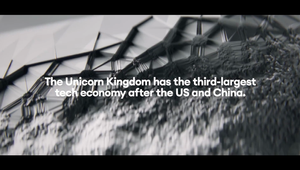
Pulling Apart the Role of Marketing in a ‘Gendered World’

You might wonder what science (and specifically, cognitive neuroscience) can bring to the gender debate. It can bring a lot. What if I told you that there was no such thing as a 'female brain' or 'male brain'? We recently held a discussion on this important topic at our Brainy Bar event alongside WARC, unpicking the science (or lack thereof) behind the ‘gendered brain’ and the subsequent importance of external messaging changing the way we think and behave.
We have always thought that boys and girls are different; a certain planetary metaphor comes to mind... But are they that different? Why are these differences perceived so starkly? Where are they coming from and what perpetuates them? Are they purely biological, or influenced by history and other societal cues? By tackling these questions and consulting the science, we can get to the bottom of where these perceived differences truly come from and why they are perpetuated in modern society. This insight is key to changing current gender inequality issues. Using science, we need to rethink the way we talk about ‘gender’ and call upon brands and marketing to play their part in continuously addressing the situation.
What does the science tell us?
We were thrilled to partner with renowned cognitive neuroscientist, Professor Gina Rippon. Her main goal? To challenge assumptions and misconceptions around gender using neuroscience. In her book, ‘The Gendered Brain’, she explains how in traditional sex, gender, and brain imaging research, the focus is often on harmful historical stereotypes.
Taking action to change the pace of the industry
So, how do we effect changes across our industry? Is it with research? Is it with the product line? Is it with communications? One small change that would be game-changing would be to open up the conversation between brands and their agencies on their D&I objectives. The campaigns we produce are often time-pressured. Unless something very specific comes up on D&I as we develop the strategy, D&I is often limited to a brief conversation over casting in ATL media rather than a deeper discussion to call out any potential area for gender or any biases. We also need to look at the beginning and what we don’t know. Marketing and communications are soaked in accidental sexism so this needs to be recognised immediately.
An overarching challenge to our industry is to make time to discuss desired outtakes; what we want our audiences to feel about a brand, regardless of gender. Emma Woodrow, group account director at TMW Unlimited expressed: “To create an effective campaign, a one-size-fits-all approach won’t work. We need to take smaller, targeted steps catering to the differences in audiences and bring them on the journey. It needs an ongoing drumbeat. A key barrier to change for brands is the risk associated in trying something new or facing backlash.”
Mechanisms to avoid gender bias, from comms to products to research.
We have seen brands retreat to safety, and this can create barriers. Stereotypes are used to enable the consumer to connect the dots quickly based on what is socially understood and create shortcuts. It is hard to subvert a stereotype, but should this stop us diversifying our comms?
“Like many companies, we have brand building campaigns and equity campaigns, and they do different jobs.” explains Nicola Dean, shopper insight lead for Northern Europe at Colgate-Palmolive. “Globally there is so much diversity, but you wouldn’t necessarily get that from looking at many adverts out there today. There are many brands that need to move away from this “one idea” of perfection, or this idea of societal norms. Our equity campaign talks to underrepresented, often overlooked individuals with the common thread that your smile is your strength, with the emphasis on your smile, not the idea that there is only one type of perfect smile.”
“We need to be giving people role models or people they can look up to that aren’t on a pedestal” shared Michael Swaisland, head of insight and analytics at Mattel EMEA. “There is nothing more enriching than a boy or a girl in a wheelchair seeing themselves represented. Barbie is committed to shining a light on empowering role models to inspire more girls. As a part of the Dream Gap Project, we’re introducing girls to remarkable women’s stories to show them you can be anything.”
Nicola Dean has battled with the legacy of demographic screening, including limitations around gender. “Toothpaste is a gender agnostic product. If you have teeth or skin, I want to speak with you. Why were people over 65 being screened out? Why could you only be male or female? The rest doesn’t really matter!
So, what happens now?
The fact that brains are reflecting the way we live and all that we learn from all socialisation agents are key to explaining our behaviours and the way our brains decode, display attitudes, and internalise the world around us. And precisely here it is where marketing and brands are playing a role in this ‘gendered world’. Looking at what is happening outside our brains is as important as looking inside.
So, this is a call to all of us to be more aware of the stimuli we create, the language we use, the messages we launch, the stories we bring, the culture of our companies portrait and be more aware of the influence that all these stimuli have in each individual.
Image credit: Priyanka Singh/Unsplash













